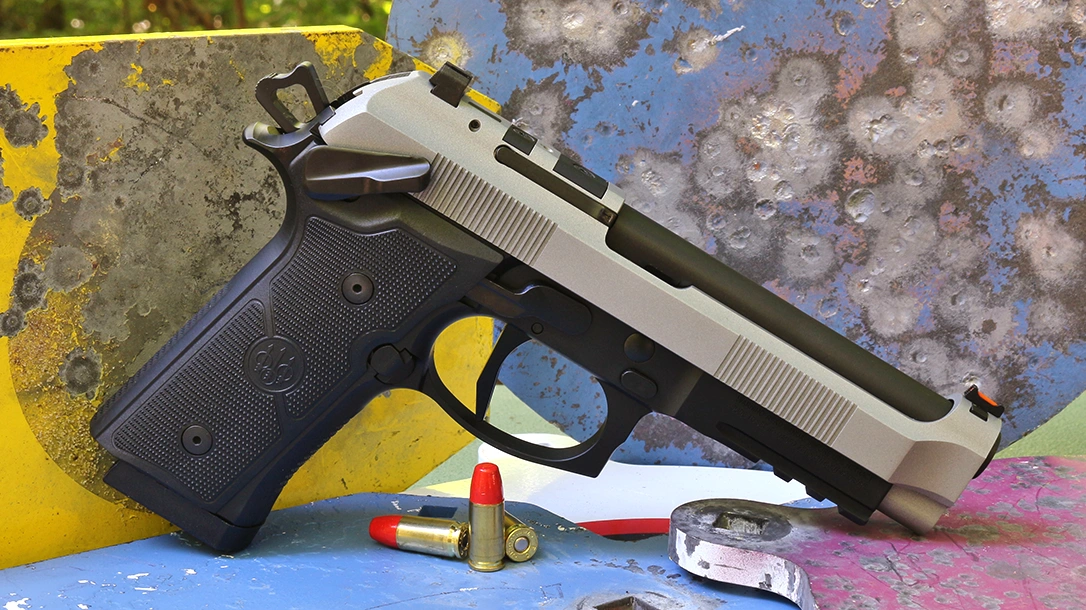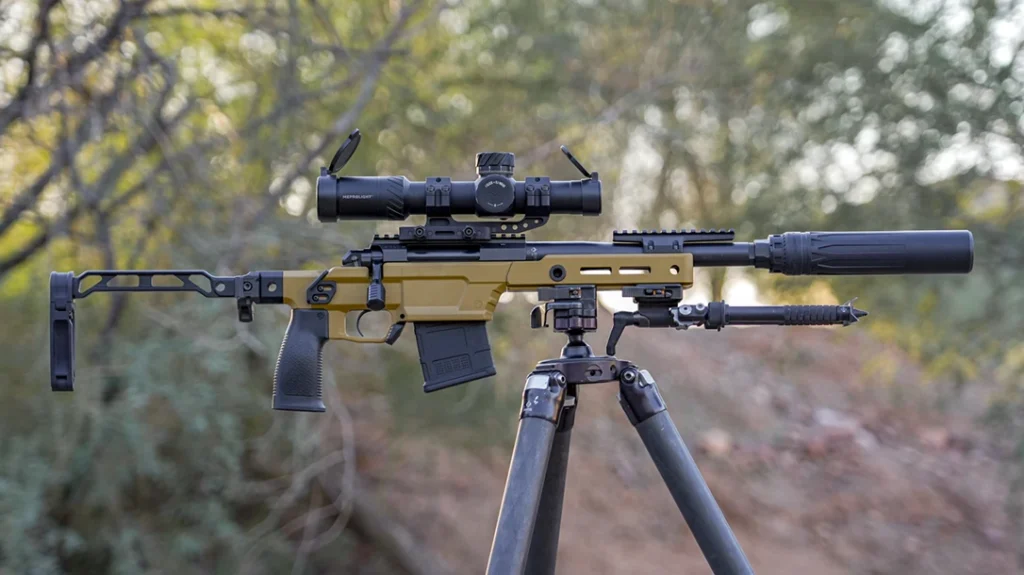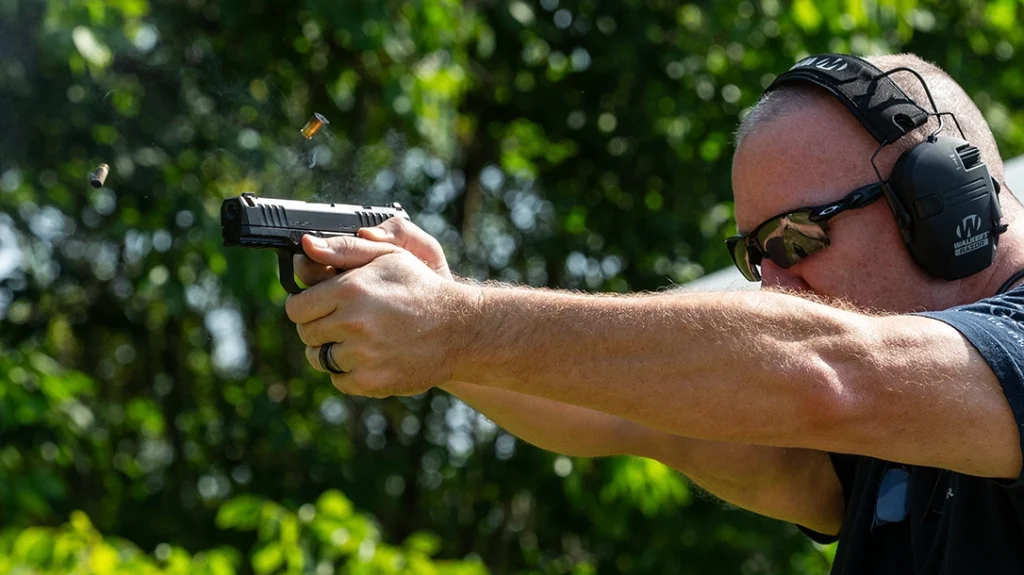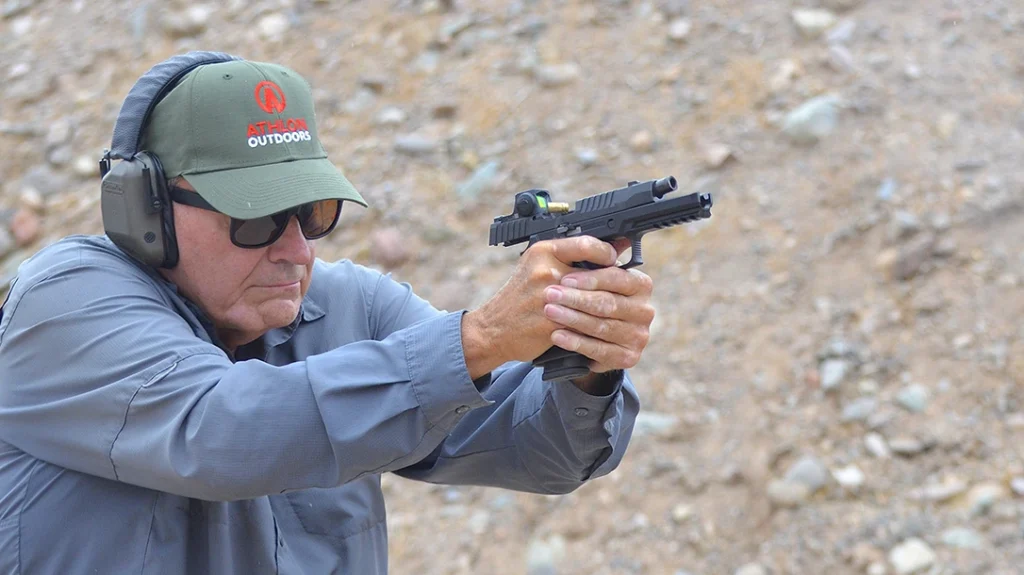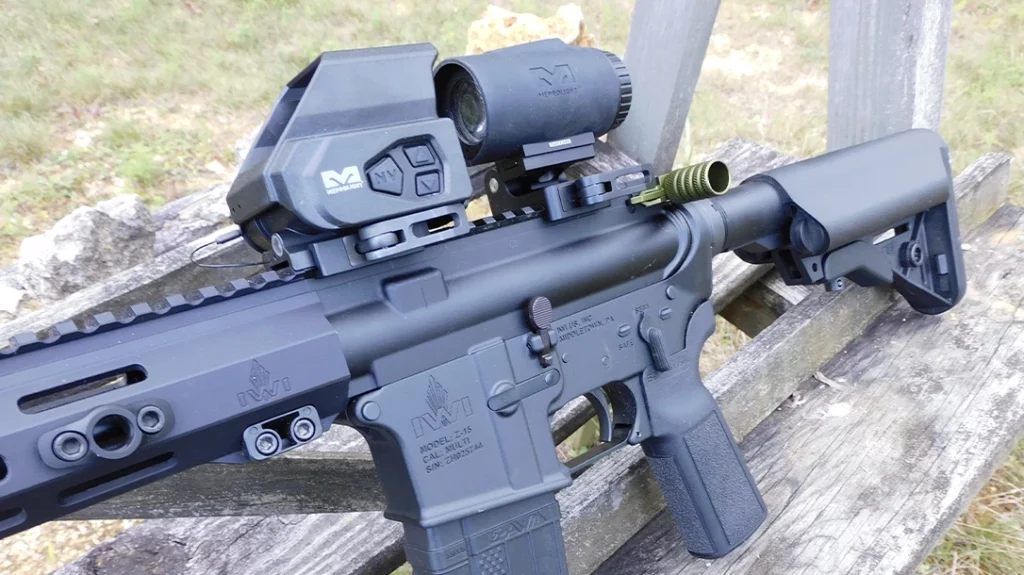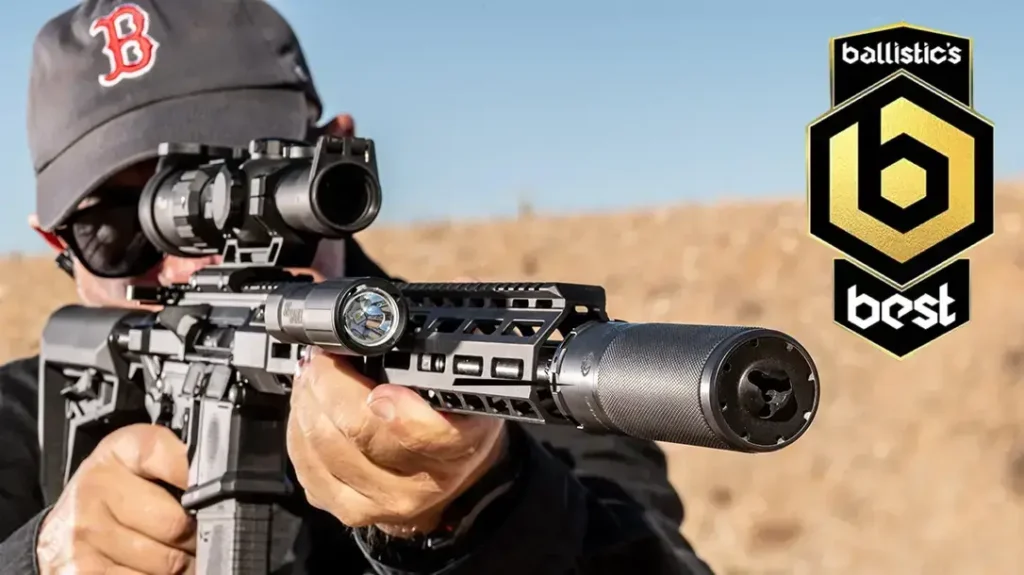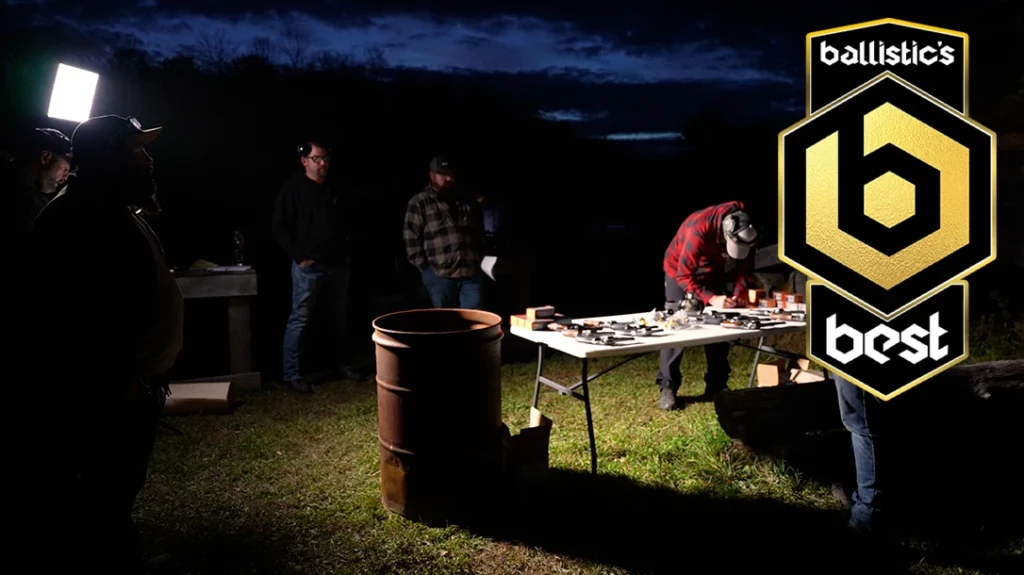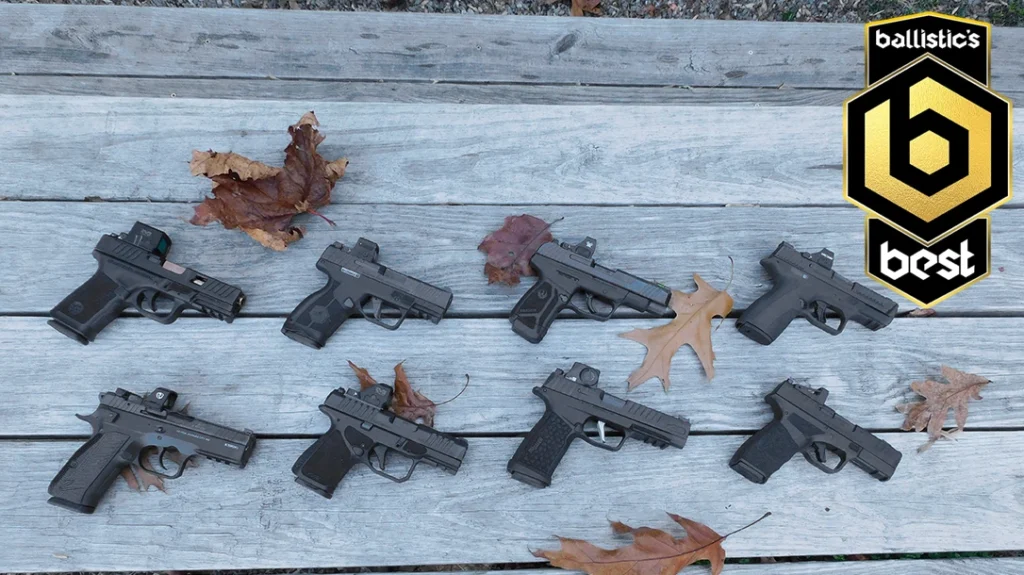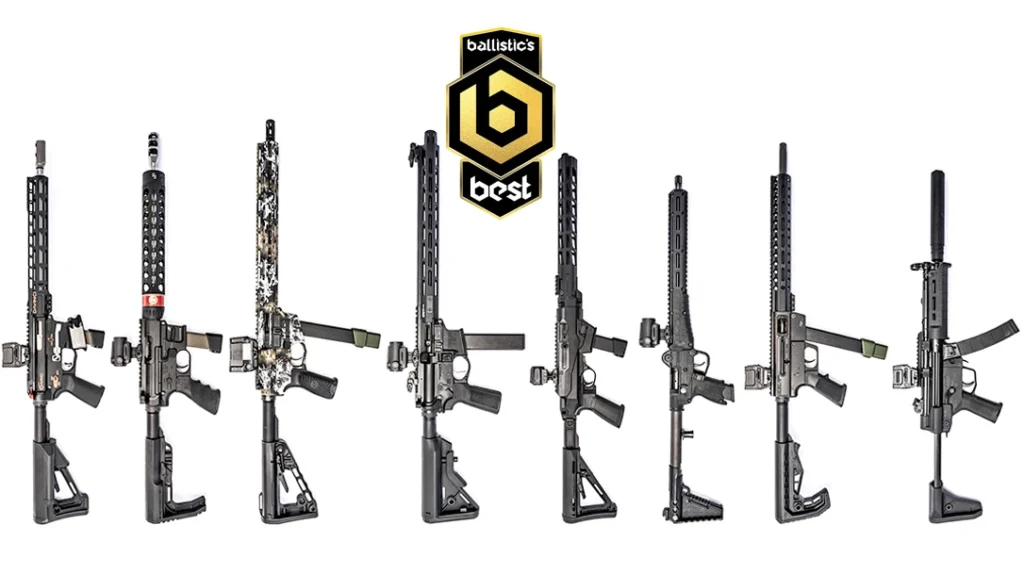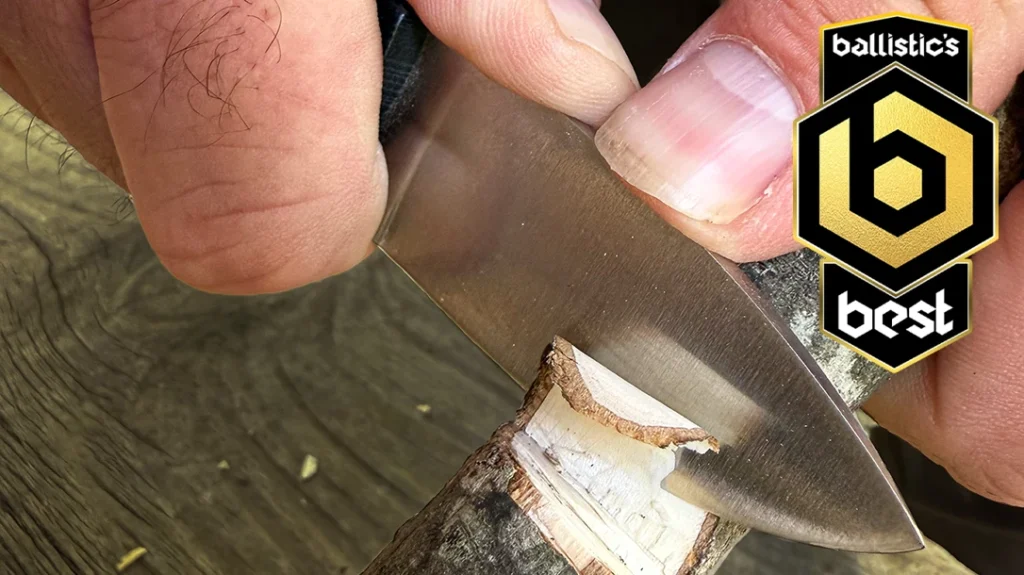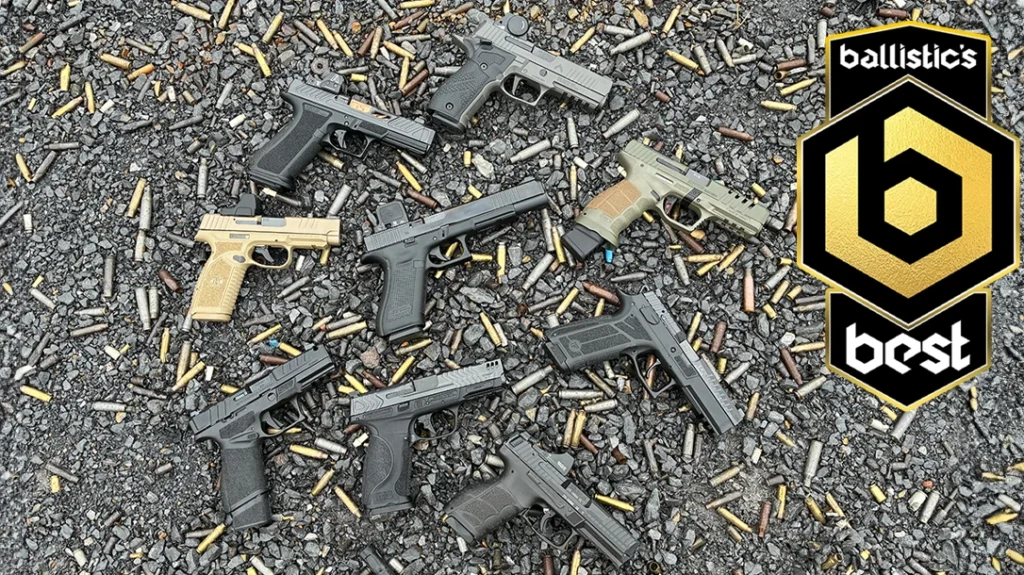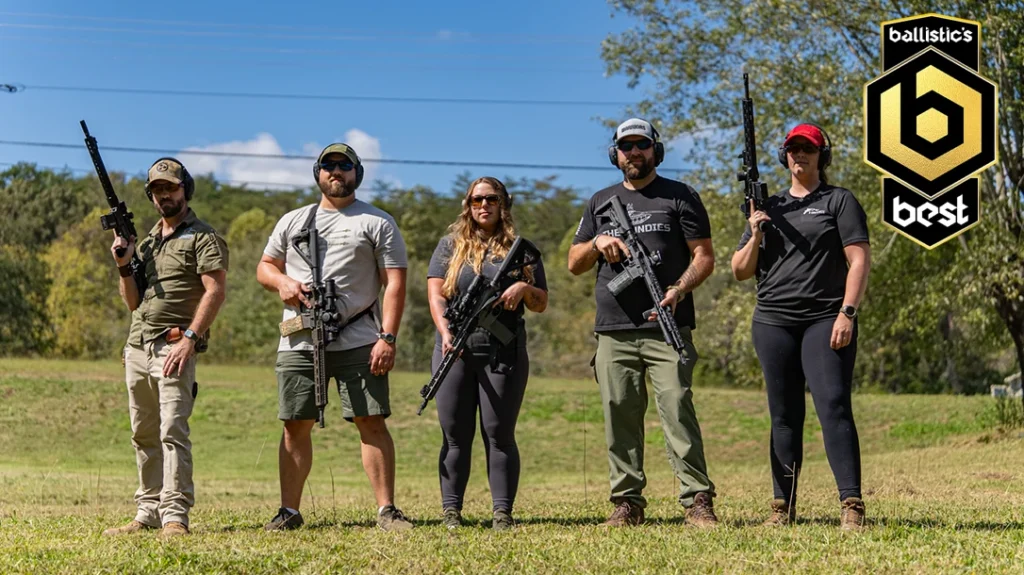It may be a genetic predisposition, but whenever a new Beretta 92 is announced, I am drawn to it like an IROC-Z to a trashy bar. This handgun and I have quite the history. I’ve wanted one bad enough to go through the two-year process of getting a New York State pistol permit. So, imagine my excitement at the release of the Beretta 92 XI.
The Beretta 92 XI SAO
When I was able to get my hands on an original 92F, I was satisfied but partially underwhelmed. Although outrageously reliable, the grip was a little fat for my hand. Likewise, I wasn’t a fan of the chunky slide-mounted decocker.
Nonetheless, I continued to learn the fundamentals of handgun marksmanship with this pistol. During the process, I learned something else: I hate double-single actions. Having a different trigger for the first shot compared to all the others is just plain tough on continuous accuracy. This is especially true when you are starting out.
Advertisement — Continue Reading Below
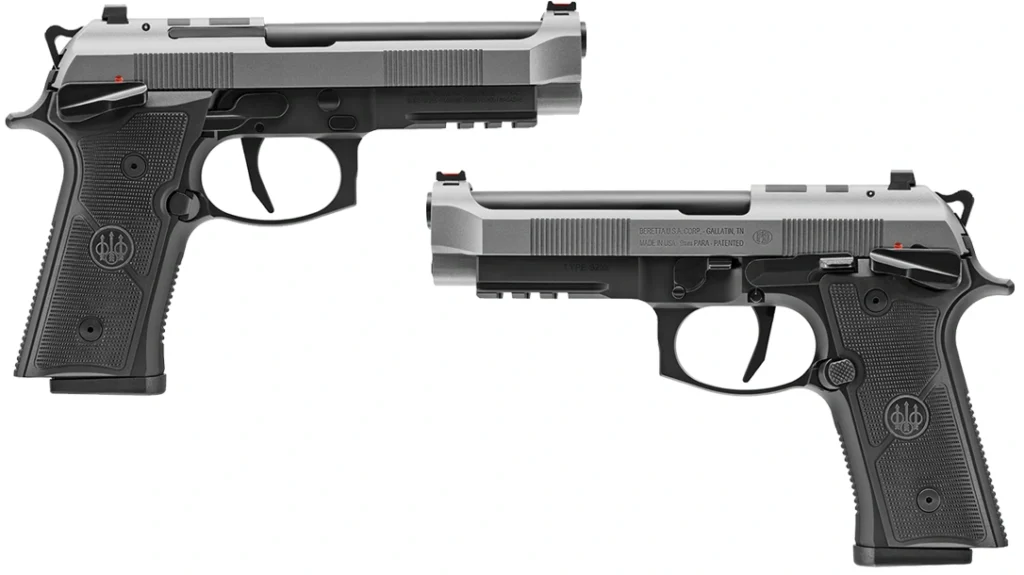
During the same period, I was moonlighting my training with a 1911 and thought, “Gee, it sure would be sweet if they could work this firing system into a 92.” Pounding away with god’s caliber was doing nothing but building anticipation.
Well, it might have taken close to 50 years, but low and behold, it’s here! Meet the 92 XI SAO, Beretta’s single-action only answer for those looking to blend the best of both worlds.
Advertisement — Continue Reading Below
92 XI Nuts and Bolts
Now, I’ll admit, the nomenclature had me scratching my head at first. However, that ended when I realized it was XI (eye) and not XL (elle). Font is important. Once I realized these Romans were using the Roman numeral for “eleven,” the mashup became apparent. It became even more glaring when I went to test the “decocker” and found the hammer remained retracted. This allowed for a “cocked and locked” carry or start position.
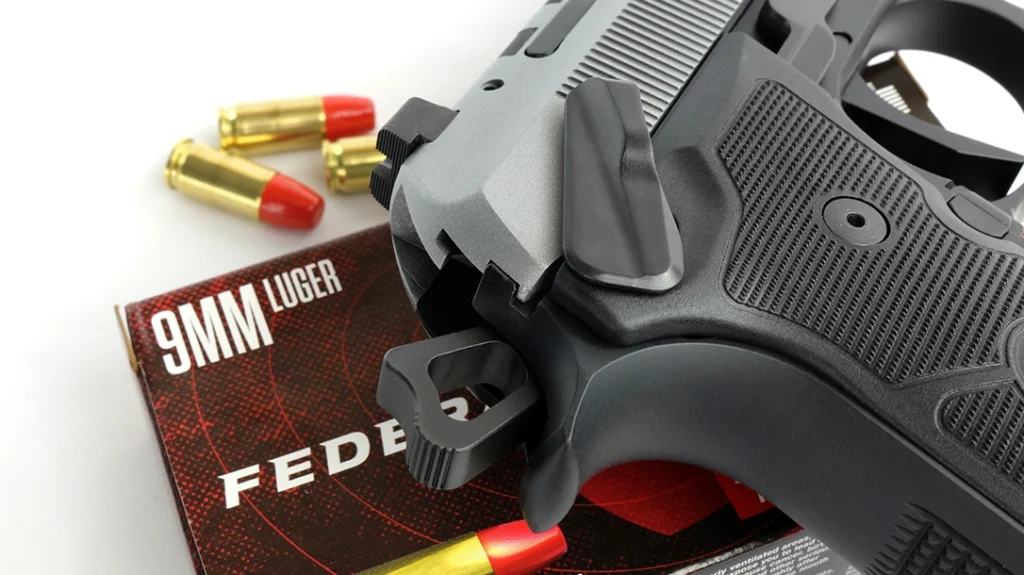
Around the same time, I noticed the newer, slimmer Vertec-style frame. All of a sudden, I became interested in 92s again. With that, I requested a sample and watched history repeat itself as I once again found myself patiently waiting for a 92 to be by my side.
Advertisement — Continue Reading Below
As several months have passed since first handling it, it was like picking up a new pistol when it arrived. Now, with time on my side, I could observe some finer details, such as the 92X grip pattern that is aggressive on the stocks yet coarse on the front and back straps.
This is pretty ingenious as it puts a gentle grip pattern against the delicate parts of your hand while putting the rough stuff against the areas that are generally work-hardened. A grit level in between the two can be found on the magazine release. The mag release is reversible to accommodate southpaws or righties who prefer using their trigger fingers to initiate a reload.
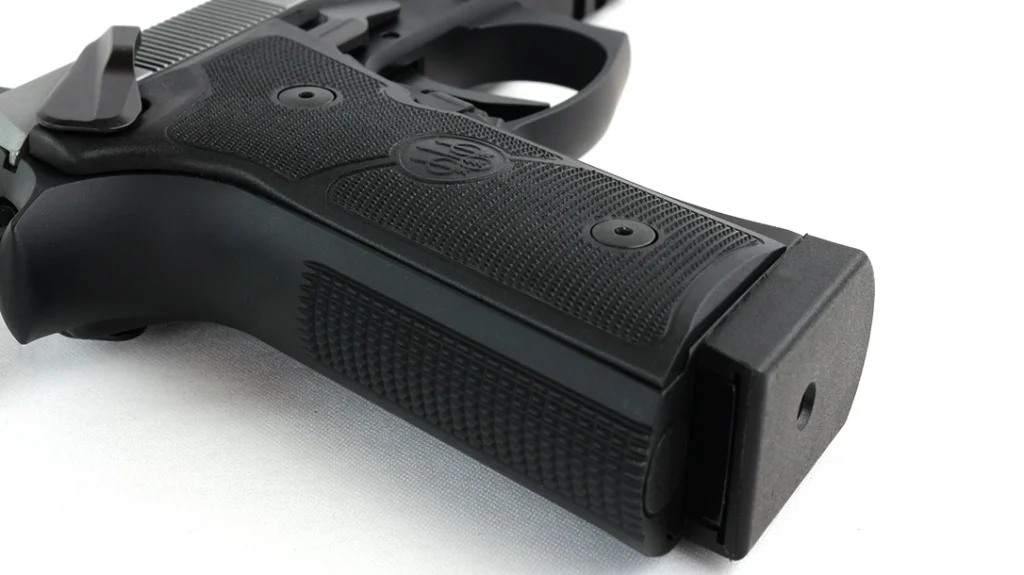
Advertisement — Continue Reading Below
To that end, the safety is ambidextrous, affording bilateral operation for either dexterity or for manipulation in less-than-ideal situations. A closer look revealed that the slide was finished in a silver Cerakote, which, at first, I thought was bead-blasted. It complements the matte-black finish of the frame nicely while providing corrosion resistance that simply can’t be beaten.
Operation
The slide of the XI is also rather unique. Its aluminum composition works in tandem with the steel slide and barrel to give it the heft it needs to overcome recoil. Combined with the short, light trigger, it is destined for rapid recovery and fast follow-up shots.
The grip angle is a bit more erect than previous 92s, with a mild undercut to promote an elevated purchase. The front of the trigger guard is flattened and stepped to accommodate those who like resting a portion of their support hand there. Additionally, the dust cover is clad with Picatinny to allow for the use of flashlights, lasers, or training devices.
Advertisement — Continue Reading Below

Above all, the frame is now home to the safety. This makes it easier to access the cocking serrations to send the slide home for some action.
In preparation for my range day, it was clear that the pistol was to be tested the way it would arrive to the consumer, which is, unfortunately, without an optics adapter. Most pistols have a native footprint and have at least one direct-mount solution. However, the rounded nature of the 92 family precludes it from this benefit. Therefore, if you plan on running a dot, make sure you get your plate of choice at checkout.
Advertisement — Continue Reading Below
With the dilemma between running the new fiber-optic sights or a red dot solving itself, I moved on to ammunition selection.
Feeding the 92 XI
Beretta 92s eat anything, so I had the broad scale of 9mm fodder at my disposal, including +P options. If something can handle the additional pressure of these loads, I’d be remiss if I didn’t include some.
With that, my hand landed on Double Tap’s 147-grain Controlled Expansion ammo. It advertises a velocity of 1125 feet per second from a barrel just 4.5 inches in length. Being that this 92 had even more pipe than that, I was interested to see what they would clock.
Advertisement — Continue Reading Below
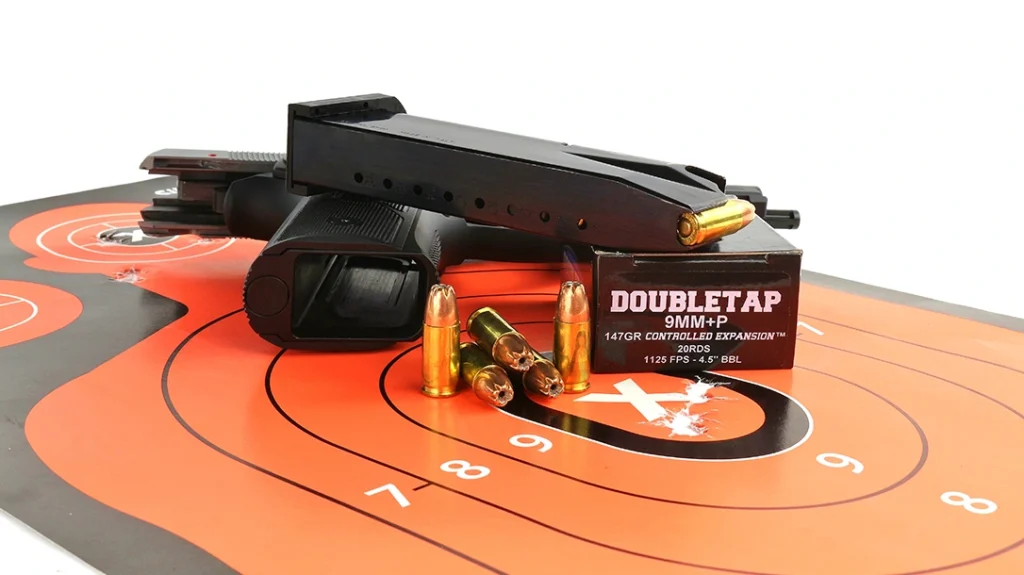
Fast-action pistols call for steel targets. In my opinion, there isn’t any ammunition better suited for this type of work than Federal’s Syntech. The bullets in this line feature a polymer coating in lieu of copper, making them less prone to unpredictable spall when engaging AR-500. Eliminating the traditional copper jacket also does a great job of keeping the barrel cool during rapid strings of fire.
Lastly, I always like to include a 124-grain FMJ loading. It best mimics the NATO load that the 92 family is associated with. Fiocchi makes an excellent, affordable load with this bullet, loaded to a more modest velocity for easy shooting and less wear and tear on the firearm.
Advertisement — Continue Reading Below
Getting Some Readings
I fired my first shots over a Caldwell G2 Chronograph to gather velocity data as well as confirm the sights were set correctly at the factory. At 15 yards, it shot lights out, and I was impressed. I imparted a 6’oclock hold, and that’s exactly where my bullets impacted. This proves this firearm is built for point-and-shoot applications.
This slow-fire routine also made for a more intimate introduction with the trigger. Beretta really got with the times in this area, as the new bang switch is as flat as it is wide. Additionally, it features a deeply grooved surface to keep your finger where it belongs while being depressed.
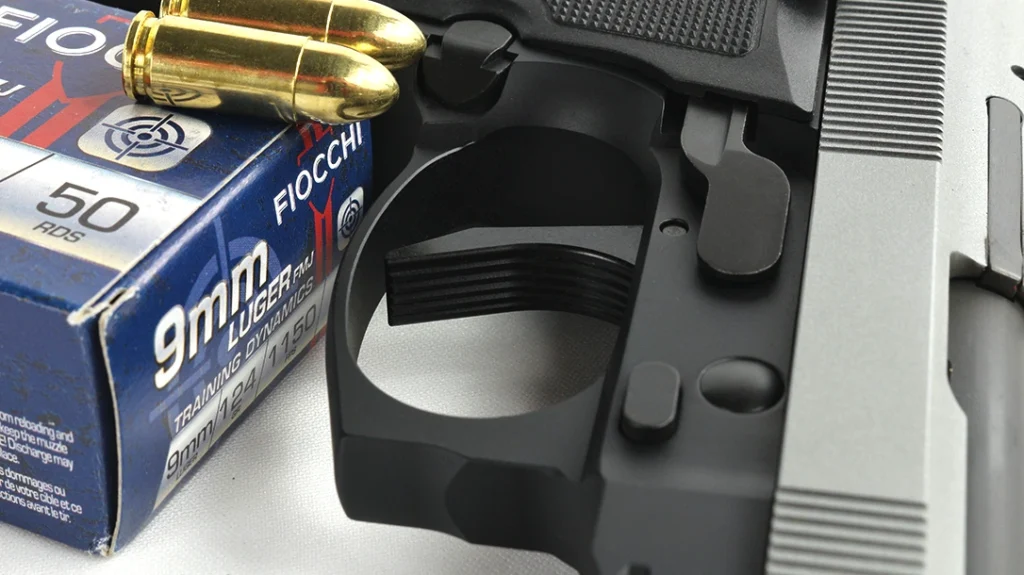
Using a Lyman Digital Trigger Gauge, I measured a clean and repeatable break at four pounds, even. Likewise, it has a crisp, forceful reset after just a quarter inch of forward travel.
Ringing Steel
Bringing the pistol over to my steel pit, I began testing splits and transitions against a plethora of Caldwell IPSCs and a CTS portable plate rack. Here is where the gun’s weight was of greatest advantage. It kept the muzzle down, directing controlled pairs straight into the A-Zone.
The short reset allowed me to run pairs as tightly as .19 seconds apart and allowed for rapid transitions across all six of my plates. Overall, it was one heck of a speed demon. That’s before accounting for the time saved when coming out of a holster.
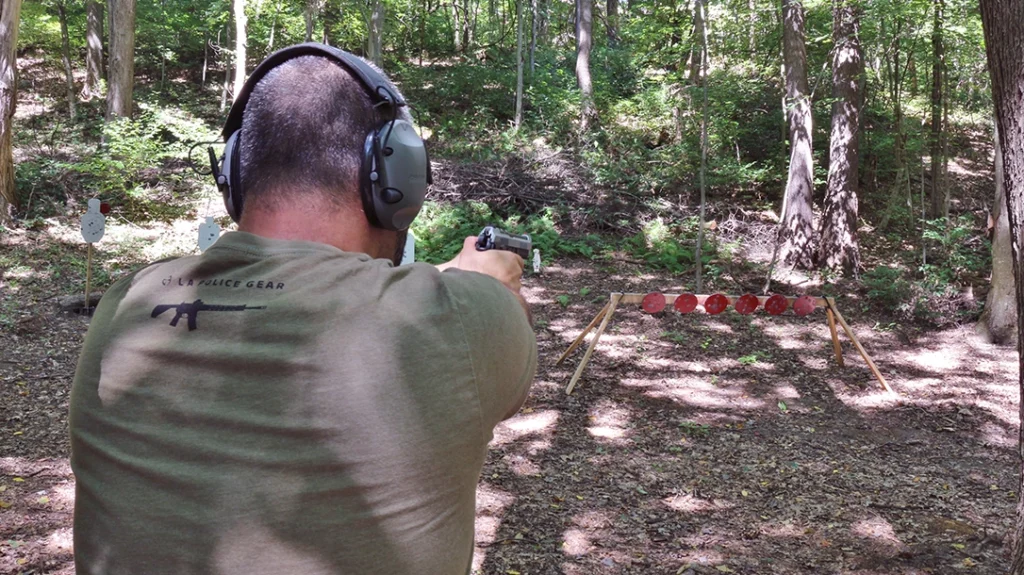
Being that the general footprint is the same, nearly any 92 holster that accommodates a rail will work. That said, the only part of my drawstroke that changed was what my thumb did during presentation. It easily hit the safety lever during this motion, and I capitalized on the light first-shot trigger press while enjoying that it was the same for every other round in the magazine.
When it was time to reload, I found that the magazines dropped free and were interchangeable with the other 92 mags that I already possessed. Beretta even includes a spare if this is your first pasta pistol.
Parting Shots
The 92 XI SAO is the Beretta that most of us have been longing for, and it certainly did not disappoint. The only downside that I see with this new handgun is for those who are used to carrying a 92FS like a revolver, meaning that only the double-action trigger serves as a safety.
The new pistol has a different manual of arms. So, they’ll have to get used to knocking the safety off before firing.
The same goes for those that carry the classic decocked/safety on, as that same draw stroke with the XI will just double down on the safety. However, that is a problem that will only apply to a few. Like all things, it can be alleviated with a regimented practice routine. The same goes for that flinch you developed when trying to learn the basics with .45 ACP.
For more information, please visit Beretta.com.
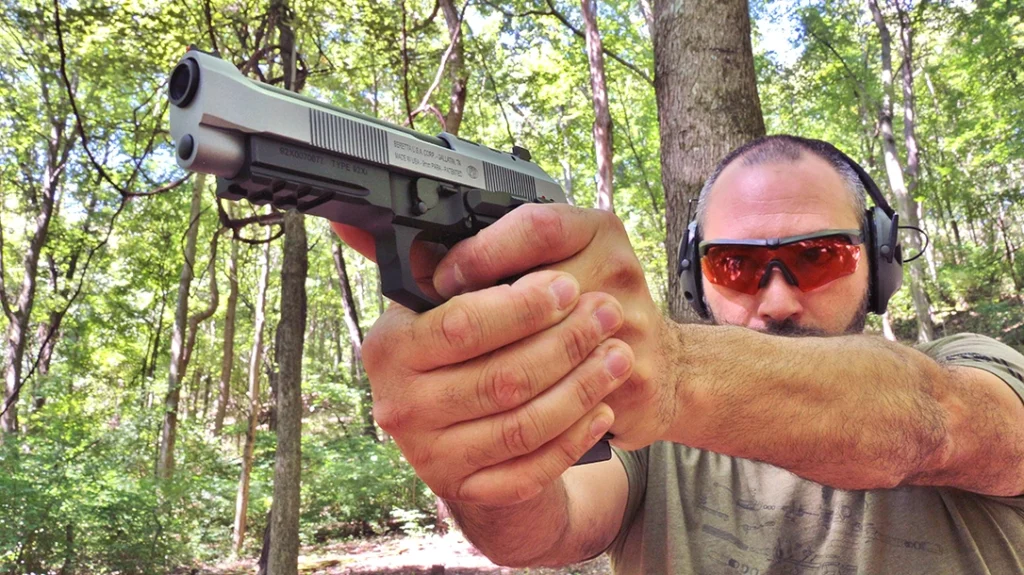
Beretta 92 XI Specs
| Caliber | 9mm Luger |
| Capacity | 18+1 |
| Barrel | 4.7 inches |
| Overall Length | 8.5 inches |
| Weight | 33.3 ounces |
| Grips | Polymer |
| Sights | Fiber-optic front, drift adjustable rear, optics cut (requires adapter) |
| Action | SAO |
| Finish | Cerakote |
| MSRP | $949 |
Performance
| Double Tap +P 147 Controlled Expansion | |
| Velocity | 1141 |
| Accuracy | 1.31 |
| Federal Syntech Range 115 TSJ | |
| Velocity | 1126 |
| Accuracy | 1.80 |
| Fiocchi Training Dynamics 124 FMJ | |
| Velocity | 1137 |
| Accuracy | 2.24 |
Bullet weight measured in grains, velocity in feet per second, and accuracy in inches for best five-shot groups from 15 yards.
